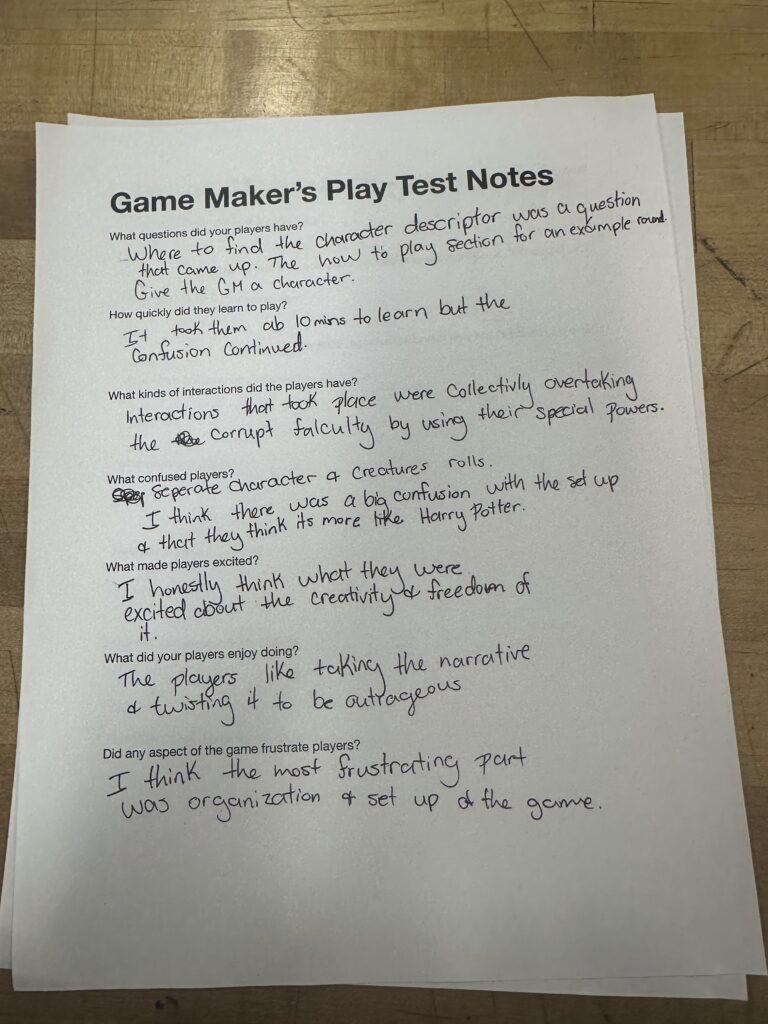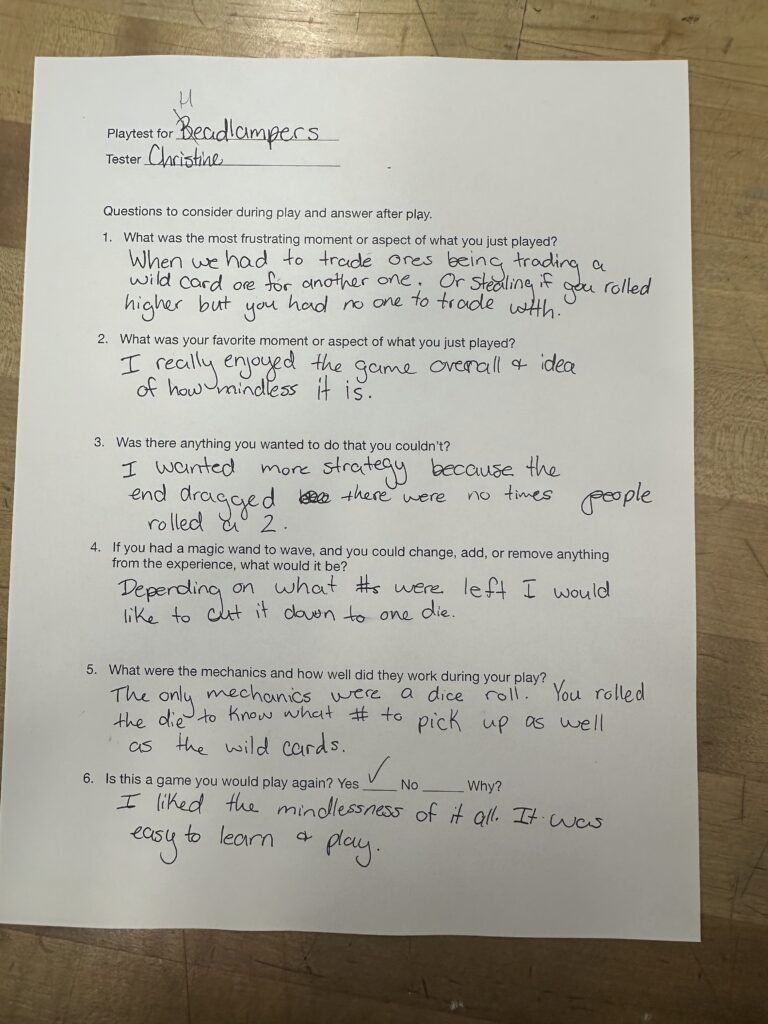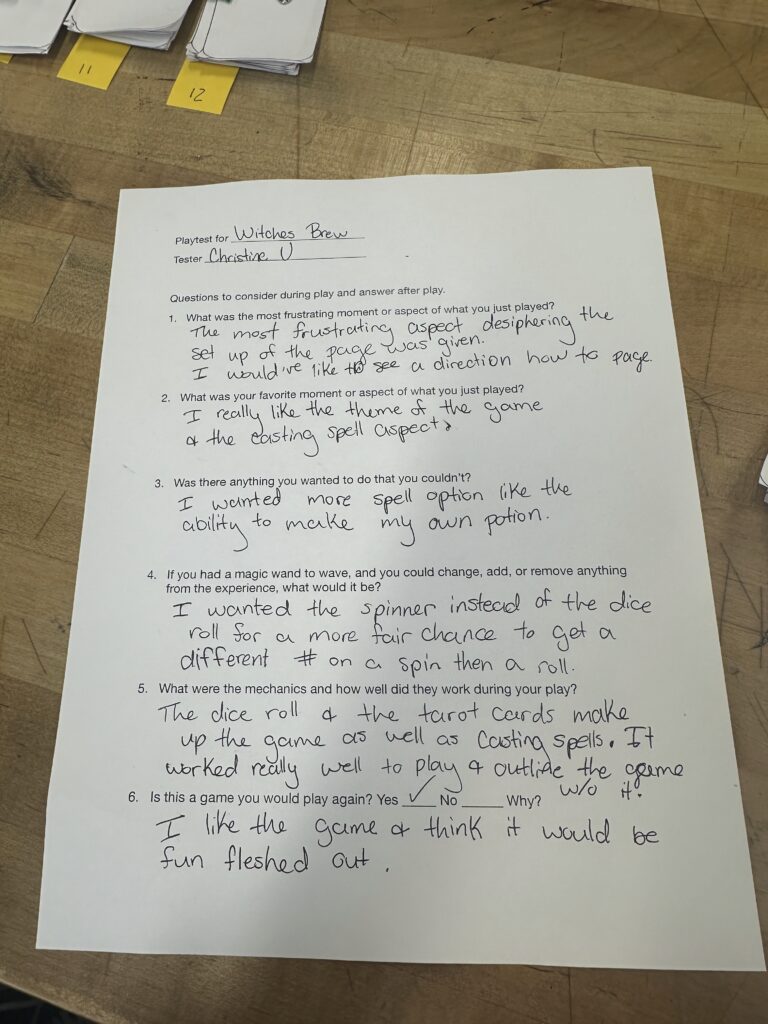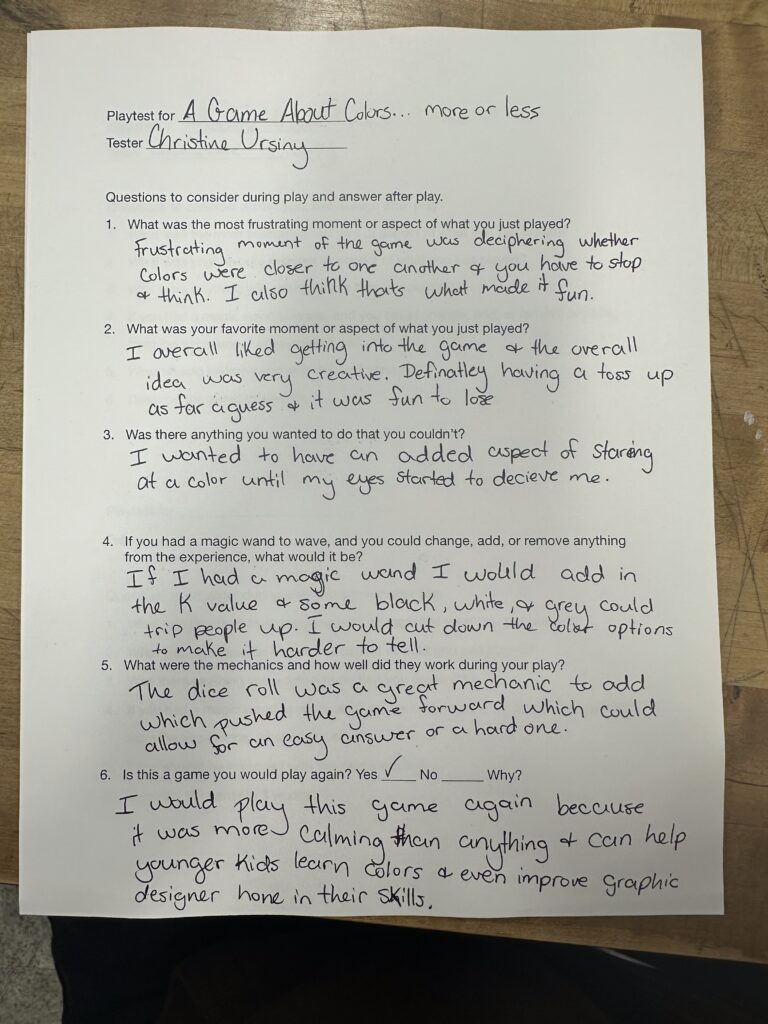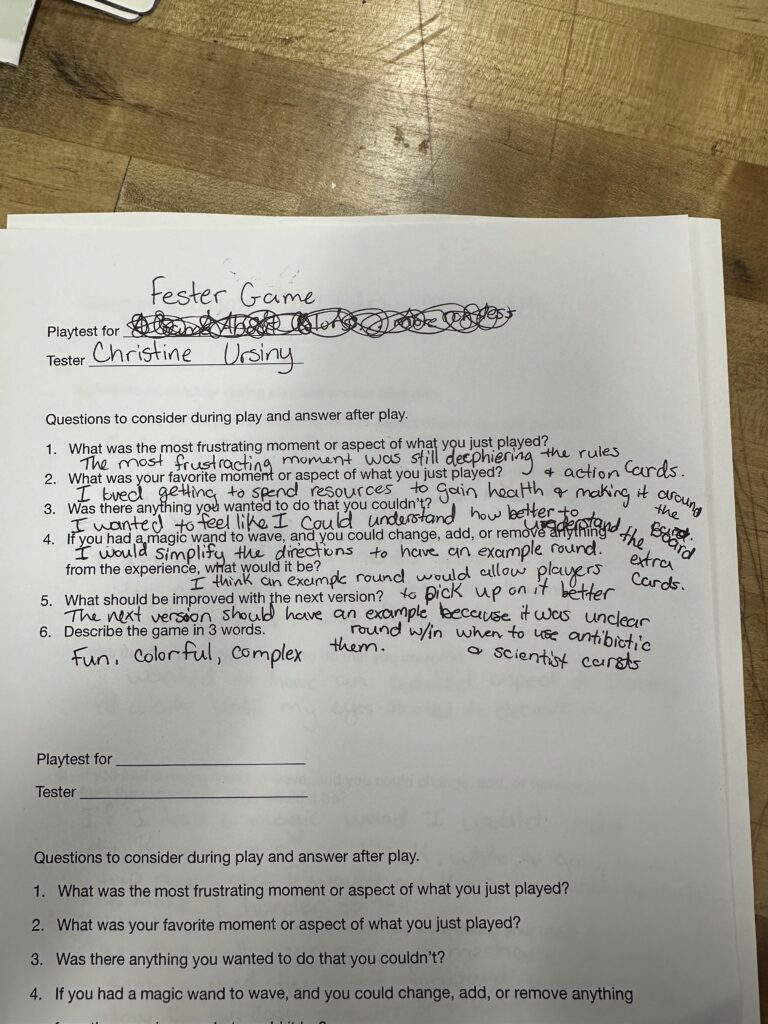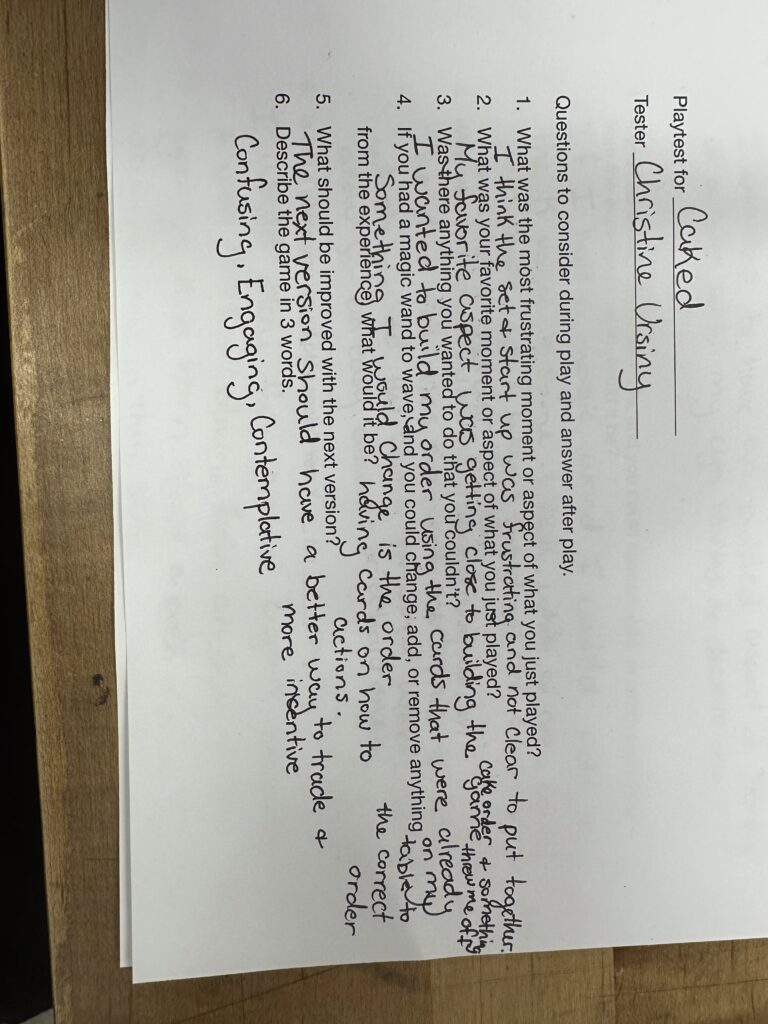The Trial of the Taming Spires Documentation
Tale Weavers Documentation
Go Wish Documentation
Go Wish Aleah and Christine Official Rules
Go Wish
Goal
Be the first player to collect four matching cards of the same number, person, or suit guided by fate and fortune.
Materials
- A 52-card deck (or a custom tarot-themed deck with four suits: Cups, Swords, Wands, and Coins).
- A fortune teller (paper cootie catcher) with the four suits written inside.
Setup
- Shuffle the deck and deal 7 cards to each player.
- Place the remaining cards face down in the draw pile.
- Place the fortune teller in the center of the table. This represents fate guiding the players.
How to Play
Step 1: Consult the Fortune Teller
- The player whose turn it is selects a suit Coin, Sword, Cup, or Wand — and spells it out, opening and closing the fortune teller with each letter.
- When finished, the player chooses a number revealed inside (1–6).
- Open that flap to reveal an action prompt — this can determine:
- How many cards to draw (e.g., “Draw 2 cards”),
- Which card to play (e.g., “Play your 5th card”),
- Or a fun fate-based rule (e.g., “Trade hands with another player”).
(You can write these actions under each flap of the fortune teller.)
- How many cards to draw (e.g., “Draw 2 cards”),
Step 2: Make a Wish
After following the fortune teller’s action:
- The player selects another player and asks if they have a specific number, person, or suit (just like in Go Fish).
- Example: “Do you have any Cups?” or “Do you have any 7s?”
- Example: “Do you have any Cups?” or “Do you have any 7s?”
- If the other player has the requested cards, they must hand them over, and the asker gets another turn.
- If the other player does not have them, the asker must draw from the top of the draw pile.
Step 3: Fate’s Consequences
Depending on how the turn goes:
- If successful:
- Keep your cards and continue your turn.
- When you complete a set of four matching cards (by number/person/suit), place them face-up — that’s one fulfilled Wish.
- Keep your cards and continue your turn.
- If unsuccessful:
- Discard all but the card you used to make your “Wish.”
- Draw back up to 6 cards.
- The other player also draws 1 new card from the deck to replenish their hand.
- Discard all but the card you used to make your “Wish.”
Step 4: Refresh the Deck
If the draw pile runs out, shuffle the discard pile to create a new deck.
Winning the Game
The first player to fulfill three Wishes (collect three complete sets of four cards) wins the game. Their fate is the strongest!
“Go Wish” Game iteration 1 for Christine and Aleah cards
Aleah and Christine Game Idea Brain dump
Braindump:
Materials:
- Fortune teller
- Deck of cards (52 cards)
- Using tarot cards to build a deck
Sort of go fish
- Fortune teller tells us how many cards to pick up
- Or fortune teller tells us depending of order of cards which one to pick up if u roll a five pick up the fifth card in your deck
- Keep incorrect card and discard other 4 then pick up 4 new cards
Rules:
Take fortune teller select from coin, sword, cup, and wand
Spell one opening and closing each section with each letter spelled
Chose number from the spot left open
Open that section
Read aloud your action
Keep that card in your hand
Select a player
Ask them if they have the same number/person and or suit
Collect all that player has
Discard all cards
Pick up new set or 7
If the ask is unsuccessful
Discard all cards except the one you used in that turn
Then pick up 6
Other player that was asked to replenish hand
Continue with this process until out of cards then shuffle the discard pile

